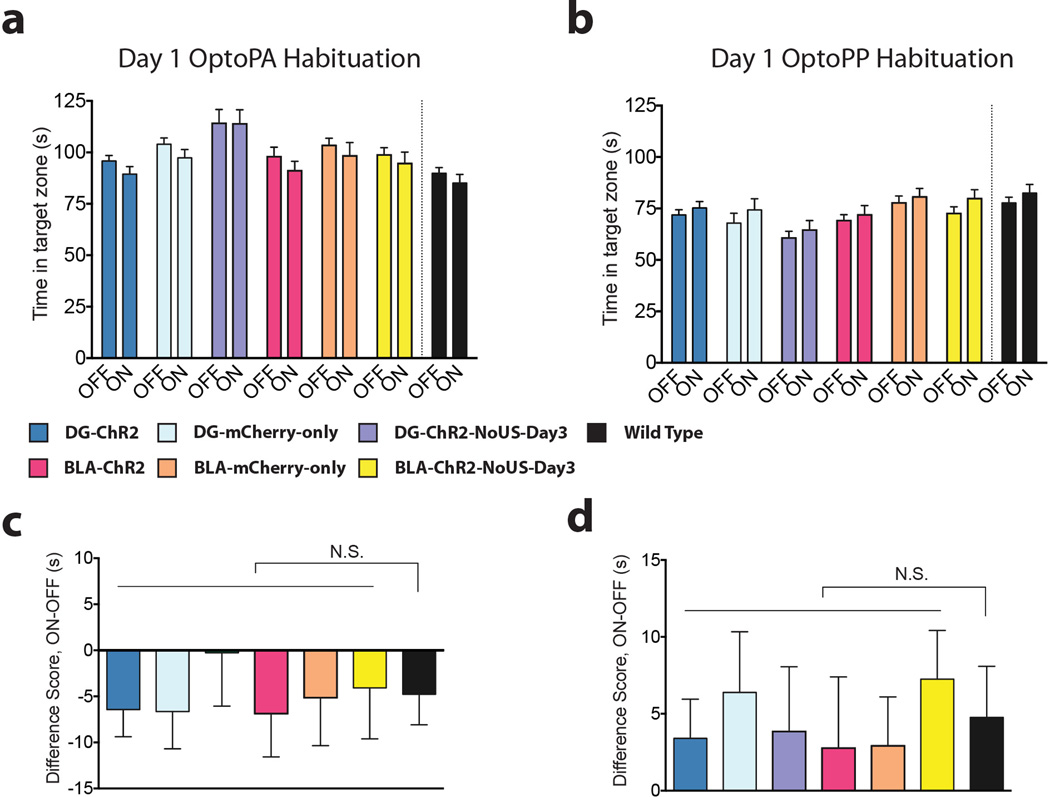Extended Figure 2. Light stimulation in the OptoPA and OptoPP Tests has no effect during habituation.
a, Day 1 OptoPA Habituation. There are no within group differences in the average duration spent in the target zone during the average of the BSL and OFF phases (OFF) and the averages of the two light on phases (ON) during day 1 habituation in the OptoPA test, even though there is an overall difference between the two types of phases (F1,173 = 6.46, P < 0.05, 6 n.s. multiple comparisons. DG-ChR2 n = 48, DG-mCherry-only n = 39, DG-ChR2-NoUS-Day3 n = 17, BLA-ChR2 n = 32, BLA-mCherry-only n = 27, BLA-ChR2-NoUS-Day3 n = 27). b, Day 1 OptoPP Habituation. There are no within group differences in the average time duration spent in the target zone during the average of the BSL and OFF phases (OFF) and the average of the two light on phases (ON) during day 1 habituation in the OptoPP test, even though there is an overall difference between the two types of phases (F1,195 = 8.06, P < 0.01, 6 n.s. multiple comparisons. DG-ChR2 n = 54, DG-mCherry-only n = 36, DG-ChR2-NoUS-Day3 n = 24, BLA-ChR2 n = 35, BLA-mCherry-only n = 31, BLA-ChR2-NoUS-Day3 n = 21). c–d, There are no differences between experimental groups and wild type mice tested without light stimulation c, In the OptoPA test, the difference scores (ON-OFF) are similar between experimental groups (same as panel a) and wild type mice (n = 33) that did not receive light stimulation (F6,205 = 0.19, n.s.). d, In the OptoPP test, the difference scores (ON-OFF) are similar between experimental groups (same as panel b) and wild type mice (n = 33) that did not receive light stimulation (F6,227 = 0.21, n.s.).

